
Las tradiciones son el hilo conductor que nos une a generaciones pasadas, es un legado que refleja las aspiraciones, creencias y experiencias de quienes nos precedieron. Comprender nuestras tradiciones implica reconocer el tejido perdurable que configura el significado de nuestras identidades colectivas e individuales, ellas reflejan la constante adaptación del ser humano a su entorno y la necesidad innata de celebrar la vida y compartirla con los demás. La Navidad, con su carga histórica y cultural, es un ejemplo perfecto de esta compleja interacción entre la necesidad humana de celebración y la evolución de las creencias y las prácticas sociales a través del tiempo, pero esa evolución no ha estado carente de conflictos, mucho antes de la celebración decembrina que conocemos en Venezuela. En otras palabras, no ha existido una "Navidad original" inalterada, la tradición navideña que celebramos hoy ha tejido su significado a través de ritos, narrativas, objetos y espacios, que se ha sido transmitido y transformado a través de las generaciones.
Palpar la evolución de la Navidad nos permite comprender la riqueza de su significado
English version
Traditions are the thread that binds us to past generations, a legacy that reflects the aspirations, beliefs and experiences of those who came before us. Understanding our traditions implies recognizing the enduring fabric that shapes the meaning of our collective and individual identities, they reflect the constant adaptation of human beings to their environment and the innate need to celebrate life and share it with others. Christmas, with its historical and cultural burden, is a perfect example of this complex interaction between the human need for celebration and the evolution of beliefs and social practices through time, but that evolution has not been without conflict, long before the Christmas celebration we know in Venezuela. In other words, there has not been an unaltered “original Christmas”, the Christmas tradition we celebrate today has woven its meaning through rites, narratives, objects and spaces, which has been transmitted and transformed through generations.
The evolution of Christmas allows us to understand the richness of its meaning
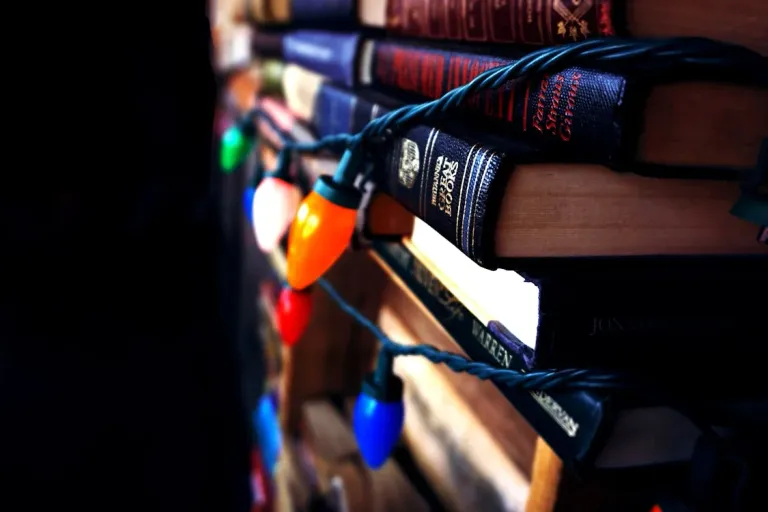
Durante el siglo II, la Iglesia enfrentó debates prolongados sobre la fecha de la navidad, proponiéndose diversas fechas sin consenso alguno. La incertidumbre llevó figuras como Orígenes de Alejandría, a considerar inconveniente celebrar el nacimiento de Cristo, a razón de no existir una fecha históricamente comprobable. por otro lado, Clemente de Alejandría, escritor griego y teólogo del siglo II, propuso el 18 de noviembre como fecha de nacimiento de Jesús. Estas propuestas, junto a otras como las del 2 de abril, el 20 de abril y la de los cronólogos egipcios que señalaban al 20 o 21 de mayo, evidenciaron la falta de acuerdo y la divergencia de opiniones sobre la fecha de la navidad. Sin embargo, la proliferación de evangelios en el siglo II, condujo a establecer una fecha oficial para consolidar la doctrina cristiana que estaba creciendo y ganando popularidad en Roma.
Antes de convertirse en una fecha establecida, la Navidad fue un enigma teológico
English version
During the second century, the Church faced prolonged debates about the date of Christmas, with various dates being proposed without any consensus. On the other hand, Clement of Alexandria, a Greek writer and theologian of the second century, proposed November 18 as the date of Jesus' birth. These proposals, together with others such as April 2, April 20 and that of the Egyptian chronologists who pointed to May 20 or 21, showed the lack of agreement and the divergence of opinions on the date of Christmas. However, the proliferation of gospels in the second century led to the establishment of an official date to consolidate the Christian doctrine that was growing and gaining popularity in Rome.
Before it became an established date, Christmas was a theological enigma
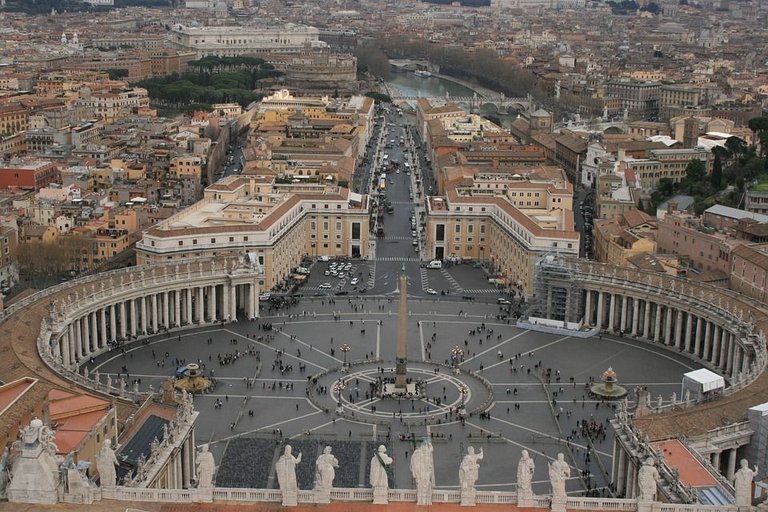
Como resultado, La adopción del 25 de diciembre como fecha navideña no se debe a una revelación divina o evidencia histórica, sino a una estrategia política y cultural impulsada por el Imperio Romano para su expansión. Así ocurrió durante el reinado de Constantino I, en el siglo IV d.C., que buscaba unificar el Imperio, no solo mediante la religión cristiana, sino también a través de medidas políticas como el famoso Edicto de Milán. Proclamado en el año 313 d.C., este edicto, concedía la libertad de culto a todos los habitantes del Imperio, incluyendo a los cristianos. Mas tarde, por parte del papa Julio quien propuso la celebración de la navidad el 25 de diciembre y luego ratificada y decretada por el Papa Liberio, como fecha de nacimiento de Jesús, consolidó la nueva religión, coincidiendo a su vez con una festividad pagana romana de gran relevancia: la celebración del solsticio de invierno y del dios Mitra. Esta apropiación permitió la gradual sustitución de festividades paganas por celebraciones cristianas, convirtiendo la Navidad en una fecha clave dentro del calendario romano, extendiéndose su celebración a lo largo del Imperio Romano.
Mucho tiempo después, el Papa Gregorio I, a principios del siglo VII, implementó una estrategia de sincretismo, más que de confrontación directa con las costumbres paganas. En lugar de destruir los santuarios paganos, propuso consagrarlos al culto cristiano. El objetivo era una transición progresiva que redujere la resistencia cultural y permitiera la adopción del cristianismo conservando elementos de la tradición pagana.
La navidad, tambien fue un proceso que ilustro y fusionó lo sagrado y lo político
English version
As a result, the adoption of December 25 as the date of Christmas is not due to a divine revelation or historical evidence, but to a political and cultural strategy promoted by the Roman Empire for its expansion. This occurred during the reign of Constantine I, in the 4th century A.D., who sought to unify the Empire, not only through the Christian religion, but also through political measures such as the famous Edict of Milan. Proclaimed in 313 A.D., this edict granted freedom of worship to all the inhabitants of the Empire, including Christians. Later, by Pope Julius who proposed the celebration of Christmas on December 25 and then ratified and decreed by Pope Liberius, as the date of the birth of Jesus, consolidated the new religion, coinciding in turn with a Roman pagan festival of great relevance: the celebration of the winter solstice and the god Mithras. This appropriation allowed the gradual substitution of pagan festivities for Christian celebrations, turning Christmas into a key date in the Roman calendar, extending its celebration throughout the Roman Empire.
Much later, Pope Gregory I, at the beginning of the 7th century, implemented a strategy of syncretism rather than direct confrontation with pagan customs. Instead of destroying the pagan sanctuaries, he proposed to consecrate them to Christian worship. The goal was a progressive transition that would reduce cultural resistance and allow the adoption of Christianity while preserving elements of the pagan tradition.
Christmas, too, was a process that illustrated and merged the sacred and the political
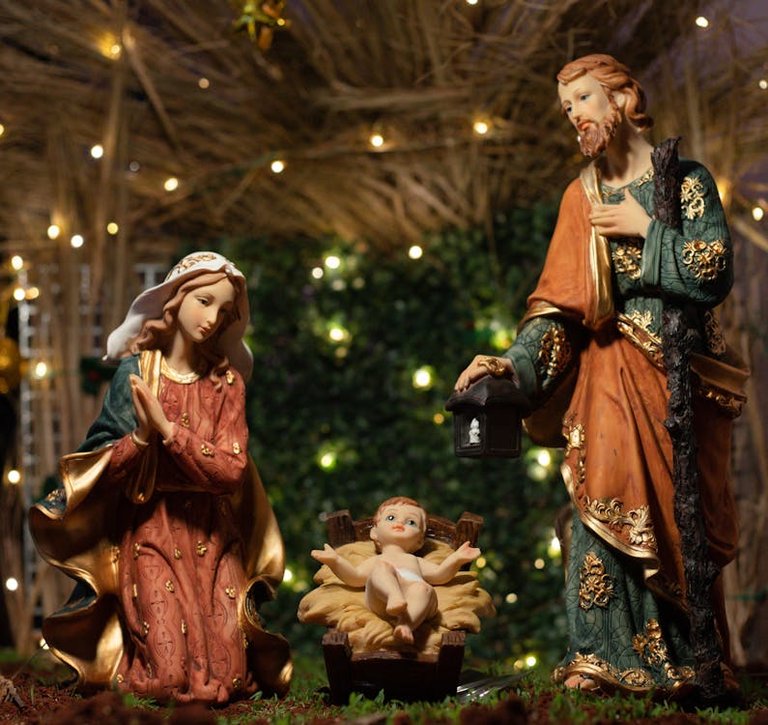
Sin embargo, la cristianización de la Navidad no elimino por completo sus raíces paganas, lo que generó preocupación y desprecio en algunos sectores de la Iglesia. Para contrarrestar el hecho festivo del solsticio de invierno, la Iglesia intentó imponer un periodo de penitencia y ayuno durante el Adviento. El Papa Gregorio Magno, a principios del siglo VII, predicó en favor de este propósito, pero su iniciativa tuvo un éxito limitado. La medida del ayuno se fue reduciendo paulatinamente hasta su casi total desaparición. Incluso los papas tuvieron que tolerar la frecuente violación de esta práctica antes de que finalmente el nuevo Código de Derecho Canónico de 1918 la aboliera.
A pesar de los esfuerzos de la iglesia, el ayuno fue un intento fallido de purificar la Navidad de sus raíces paganas
English version
However, the Christianization of Christmas did not completely eliminate its pagan roots, which generated concern and contempt in some sectors of the Church. To counteract the festive fact of the winter solstice, the Church tried to impose a period of penance and fasting during Advent. Pope Gregory the Great, in the early seventh century, preached in favor of this purpose, but his initiative had limited success. The measure of fasting was gradually reduced until its almost total disappearance. Even the popes had to tolerate the frequent violation of this practice before it was finally abolished by the new Code of Canon Law of 1918.
Despite the church's efforts, the fast was a failed attempt to purify Christmas from its pagan roots
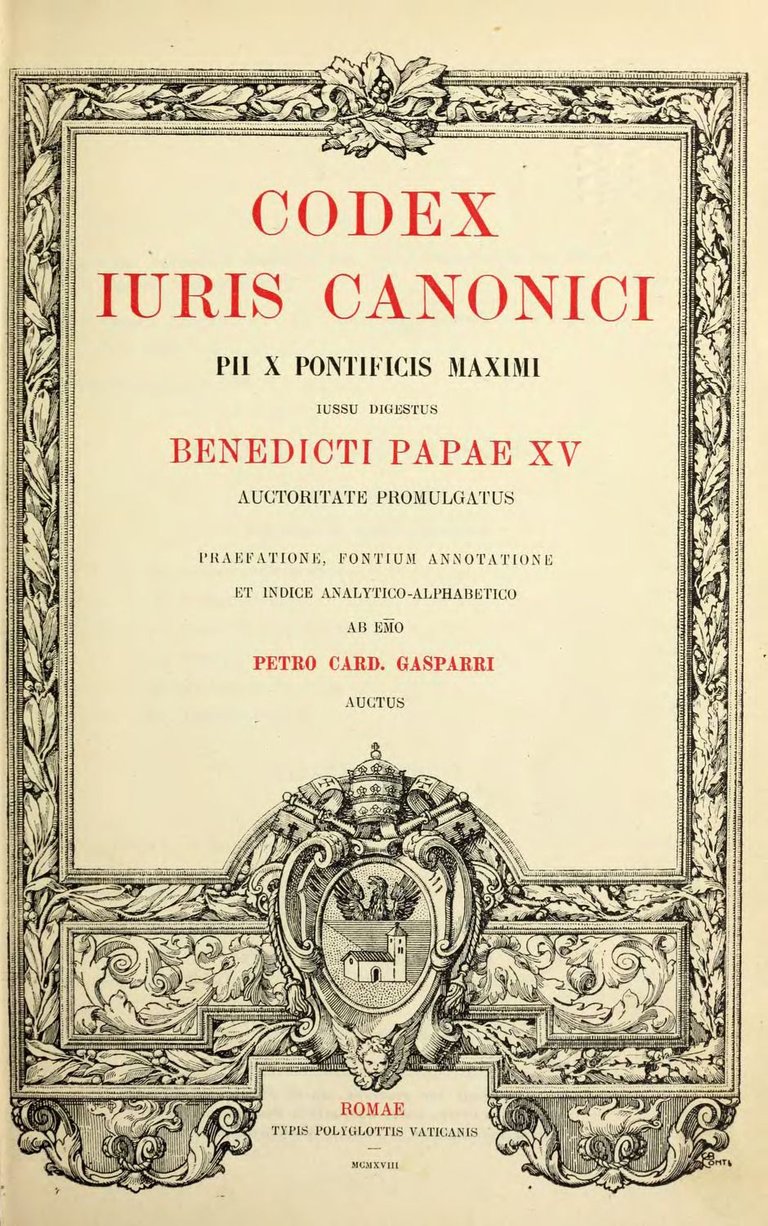
Adicionalmente, sobre la adaptación de la navidad cristiana sincretica, condujo a su completa prohibición en Inglaterra durante la guerra civil inglesa (mediados del siglo XVII) bajo el gobierno de Oliver Cromwell y su régimen puritano. Los puritanos consideraban las festividades navideñas, incluyendo los villancicos, como una tradición "papista" y derrochadora, carente de base bíblica y contraria a sus creencias. Veían en la celebración del 25 de diciembre un exceso impropio para un cristiano, criticando su origen católico y su carácter festivo. A pesar de la prohibición, las celebraciones y cantos navideños persistieron de forma clandestina. Solo con la restauración de la monarquía en 1660, se revocó la ley y la Navidad, con sus villancicos, recuperó su popularidad. Los villancicos, en este contexto, pasaron de ser simples canciones a símbolos de resistencia cultural y religiosa contra la imposición de un régimen político.
A pesar de su prohibición, la identidad cultural puede persistir incluso bajo la opresión política
English version
Additionally, the adaptation of the syncretic Christian Christmas led to its complete prohibition in England during the English Civil War (mid-17th century) under the rule of Oliver Cromwell and his Puritan regime. The Puritans considered Christmas festivities, including caroling, as a “papist” and wasteful tradition, lacking a biblical basis and contrary to their beliefs. They saw the celebration of December 25 as an improper excess for a Christian, criticizing its Catholic origin and festive character. Despite the prohibition, Christmas celebrations and songs persisted clandestinely. Only with the restoration of the monarchy in 1660, the law was repealed and Christmas, with its carols, regained its popularity. Christmas carols, in this context, went from being simple songs to symbols of cultural and religious resistance against the imposition of a political regime
Despite its prohibition, cultural identity can persist even under political oppression
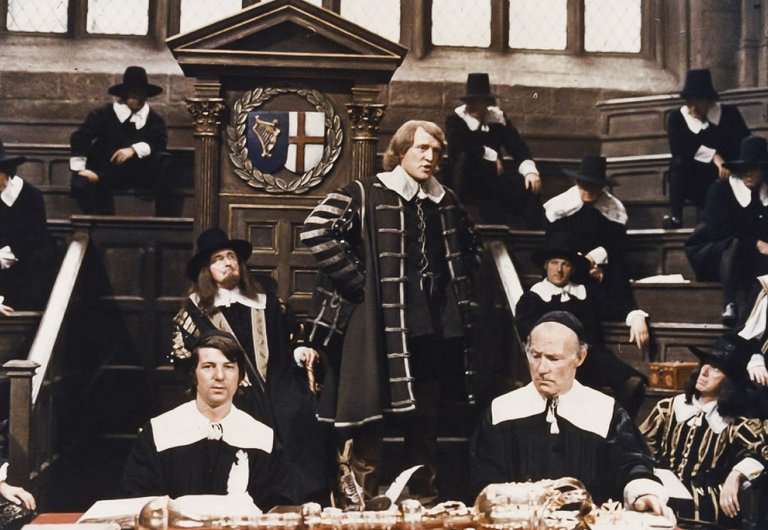
Así pudimos observar cómo la fecha de Navidad, fue producto de un largo proceso histórico. Al principio, las creencias cristianas primitivas, no se ponía de acuerdo sobre la fecha del nacimiento de Jesús. Luego, el Imperio Romano eligió celebrar la Navidad el 25 de diciembre, coincidiendo con una fiesta pagana (solsticio de invierno), para facilitar la adopción del cristianismo. A través del tiempo, hubo intentos de eliminar las costumbres paganas, pero la Navidad se fue adaptando, incluso siendo prohibida en algunos momentos.
La celebración navideña ha sido moldeada por factores religiosos, políticos y culturales y todos estos factores, dieron origen a la celebración navideña que conocemos hoy en día
English version
Thus we could observe how the date of Christmas was the product of a long historical process. At the beginning, the primitive Christian beliefs did not agree on the date of Jesus' birth. Then, the Roman Empire chose to celebrate Christmas on December 25, coinciding with a pagan holiday (winter solstice), to facilitate the adoption of Christianity. Over time, there were attempts to eliminate pagan customs, but Christmas was adapted, even being banned at times.
The Christmas celebration has been shaped by religious, political and cultural factors and all these factors gave rise to the Christmas celebration we know today
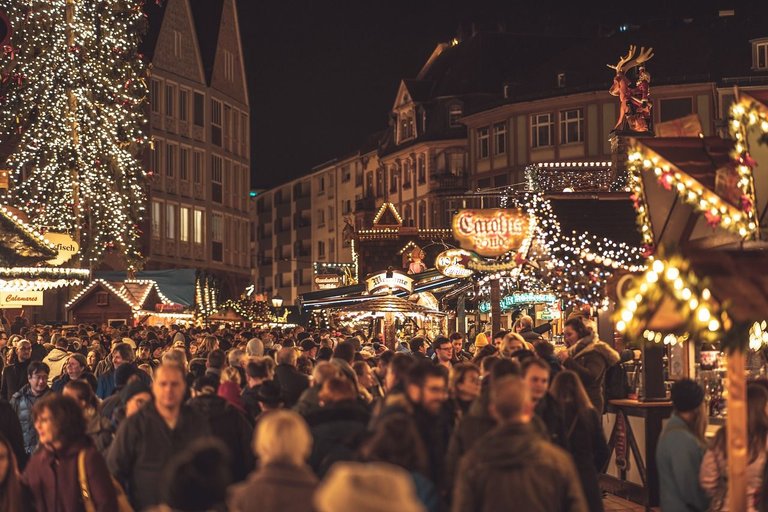
La imagen de Papá Noel que conocemos hoy, con su atuendo rojo y blanco, es en gran medida una creación de la publicidad de Coca-Cola a partir de 1931. La figura de San Nicolás, origen del mito, existía desde el siglo IV, en los valles de Licia, su representación visual variaba considerablemente a lo largo del siglo XIX. La campaña publicitaria de Coca-Cola, con el ilustrador Haddon Sundblom, facilito su apariencia, contribuyendo a su popularización mundial, aunque el uso del rojo y blanco en su vestimenta ya existía con anterioridad. No se trata de una invención novedosa, sino de una reinterpretación de una figura preexistente a través de una estrategia de marketing.
English version
The image of Santa Claus we know today, with his red and white attire, is largely a creation of Coca-Cola advertising from 1931 onwards. The figure of Saint Nicholas, origin of the myth, existed since the 4th century, in the Lycian valleys, his visual representation varied considerably throughout the 19th century. The Coca-Cola advertising campaign, with illustrator Haddon Sundblom, facilitated his appearance, contributing to his worldwide popularization, although the use of red and white in his clothing already existed before. It is not a novel invention, but a reinterpretation of a pre-existing figure through a marketing strategy.
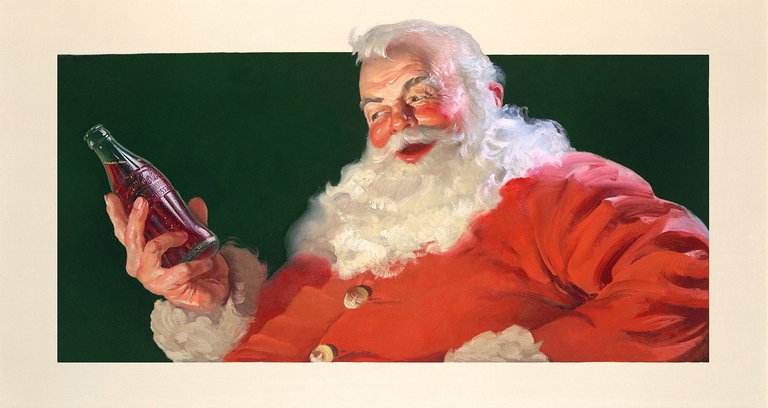
Pero Papa Noel tiene su contraparte, Ded Moroz, la figura navideña rusa, tiene raíces en la mitología eslava, se trata de un personaje más vinculado al invierno y al Año Nuevo que a la Navidad, debido a la supresión de las celebraciones navideñas durante el régimen soviético. Sus atributos de barba larga, trineo, vara mágica, y acompañado por su Nieta Snegurochka, lo distinguen claramente de la versión de Santa Claus de Coca-Cola. Ded Moroz representa una tradición autóctona, con una historia y simbolismo diferentes, que se desarrollaron de forma independiente del personaje occidental.
English version
But Santa Claus has his counterpart, Ded Moroz, the Russian Christmas figure, has roots in Slavic mythology, he is a character more linked to winter and the New Year than to Christmas, due to the suppression of Christmas celebrations during the Soviet regime. His attributes of long beard, sleigh, magic wand, and accompanied by his Granddaughter Snegurochka, clearly distinguish him from Coca-Cola's version of Santa Claus. Ded Moroz represents an indigenous tradition, with a different history and symbolism, which developed independently of the Western character.
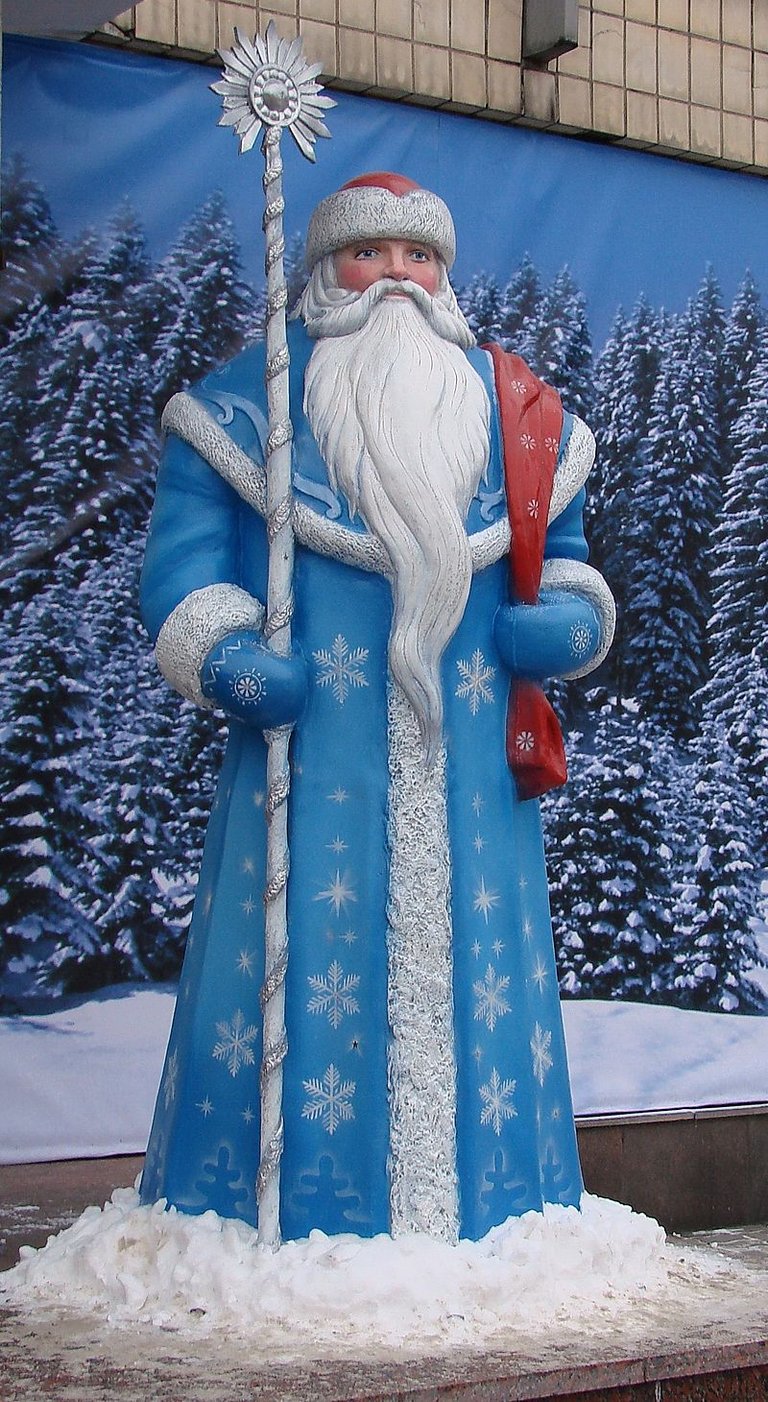
Aparte de Papa Noel y Ded Moroz, también existió Kris Kringle, es una figura que provino de la Reforma Protestante del siglo XVI y fue promovida por Martín Lutero para sustituir el culto a San Nicolás. En lugar de un santo católico, se representa al niño Jesús como el portador de regalos en Nochebuena; una versión alternativa a la tradición católica que, a través de la adaptación cultural, también contribuyó a la evolución de la imagen del Santa Claus como lo percibimos en occidente.
English version
Apart from Santa Claus and Ded Moroz, there was also Kris Kringle, a figure that came from the Protestant Reformation of the sixteenth century and was promoted by Martin Luther to replace the cult of St. Nicholas. Instead of a Catholic saint, the baby Jesus is represented as the gift bearer on Christmas Eve; an alternative version to the Catholic tradition that, through cultural adaptation, also contributed to the evolution of the image of Santa Claus as we perceive him in the West.
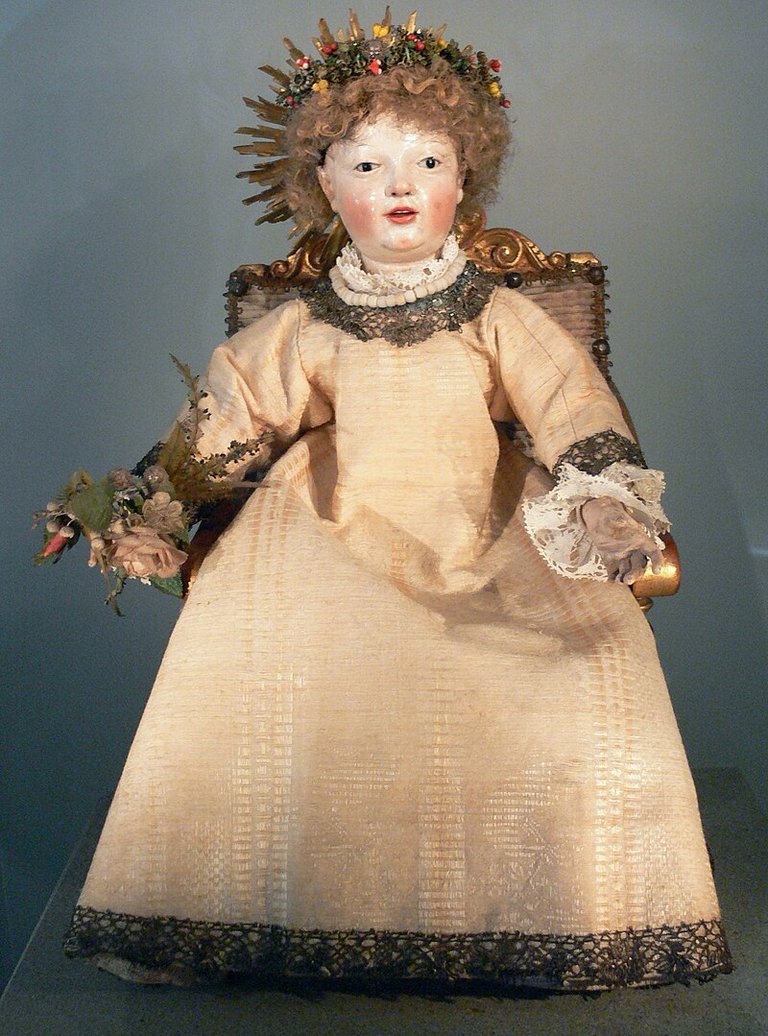
Venezuela no es inmune a los múltiples significados religiosos y simbólicos de las tradiciones navideñas durante la época decembrina. La tradición venezolana de la "Paradura, robo y búsqueda del Niño Jesús" se diferencia de las figuras de Papá Noel, Ded Moroz y Kris Kringle. En lugar de una figura que entrega regalos, esta tradición recrea el episodio bíblico de la pérdida y posterior encuentro de Jesús con sus padres en el templo, narrado en el Evangelio de Lucas (2:41-52). Y describe cómo José y María, tras viajar a Jerusalén para la Pascua, pierden a Jesús de vista. La "Paradura del Niño" —que ocurre tras la Navidad— no se centra en la entrega de obsequios, sino en un acto ritual que combina la devoción religiosa con una representación teatralizada del texto del Evangelio de Lucas. El "robo" del Niño no se trata de un acto malintencionado, sino de una promesa que culmina con una búsqueda festiva y culminando en una celebración que rememora el encuentro de Jesús con María y José.
English version
Venezuela is not immune to the multiple religious and symbolic meanings of Christmas traditions during the holiday season. The Venezuelan tradition of the “Paradura, robo y búsqueda del Niño Jesus” is different from the figures of Santa Claus, Ded Moroz and Kris Kringle. Instead of a gift-giving figure, this tradition recreates the biblical episode of the loss and subsequent meeting of Jesus with his parents in the temple, narrated in the Gospel of Luke (2:41-52). And it describes how Joseph and Mary, after traveling to Jerusalem for the Passover, lose sight of Jesus. The “Birthing of the Child”-which occurs after Christmas-is not centered on the giving of gifts, but on a ritual act that combines religious devotion with a theatricalized representation of the text of Luke's Gospel. The “theft” of the Child is not a malicious act, but a promise that culminates in a festive search and culminates in a celebration that recalls the meeting of Jesus with Mary and Joseph.
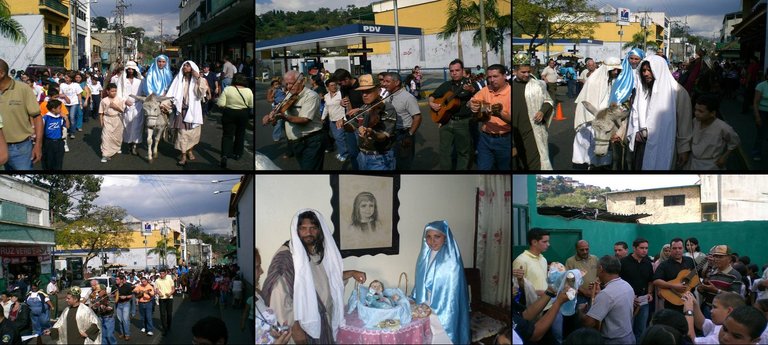
La historia de la navidad no es una línea recta, sino un camino sinuoso, lleno de tensiones y negociaciones entre creencias, costumbres y poder. No hubo una "Navidad original" única, sino una tradición en continua construcción, que conforma un diálogo tripartito entre la fe, las prácticas sociales y el contexto histórico. La Navidad que celebramos hoy es el resultado de las creencias y experiencias de generaciones pasadas, demostrando nuestra perenne habilidad para adaptar, transformar y transmitir tradiciones a través del tiempo y lugares.
Más allá de la historia oficial, la Navidad tambien aguarda un significado único para cada persona, pues refleja una síntesis de experiencias personales, recuerdos imborrables, momentos de alegría y unión familiar, reflexiones sobre el año que termina y esperanzas para el que comienza. Estas experiencias, tan íntimas y personales, tambien son importantes como la propia tradición. Independientemente dé las circunstancias individuales, la Navidad es una posibilidad real para la conexión humana: para la solidaridad, la compasión y la generosidad de cada uno. Incluso en medio de las dificultades, la posibilidad de compartir, de conectar con los seres queridos y de cultivar la esperanza se convierte en la esencia de esta celebración.
Es en esta fusión entre tradición y experiencia personal donde reside la esencia de la celebración, un espacio para la conexión humana y el cultivo de vínculos afectivos
English version
The history of Christmas is not a straight line, but a winding path, full of tensions and negotiations between beliefs, customs and power. There was no single “original Christmas”, but a tradition in continuous construction, forming a tripartite dialogue between faith, social practices and historical context. The Christmas we celebrate today is the result of the beliefs and experiences of past generations, demonstrating our perennial ability to adapt, transform and transmit traditions across time and place.
Beyond the official history, Christmas also holds a unique meaning for each person, reflecting a synthesis of personal experiences, indelible memories, moments of joy and family togetherness, reflections on the year that ends and hopes for the one that begins. These experiences, as intimate and personal, are as important as the tradition itself. Regardless of individual circumstances, Christmas is a real possibility for human connection: for solidarity, compassion and generosity for each other. Even in the midst of difficulties, the possibility of sharing, connecting with loved ones and cultivating hope becomes the essence of this celebration.
It is in this fusion of tradition and personal experience that the essence of the celebration lies, a space for human connection and the cultivation of emotional bonds

Agradezco a @emiliorios por brindarnos nuevamente un espacio para la reflexión, en este tiempo de recogimiento y celebración navideña. Espero que este escrito haya ayudado a enriquecer el significado de esta perdurable legado a través de los siglos.
English version
I thank @emiliorios for once again providing us with a space for reflection, in this time of recollection and Christmas celebration. I hope this writing has helped to enrich the meaning of this enduring legacy through the centuries.
Adjunto las fuentes consultadas para respaldar históricamente mi escrito. Puede verificar la autenticidad de las mismas y profundizar en el significado que la Navidad ha adquirido a través de los siglos.
I attach the sources consulted for the historical support of my writing that can verify the authenticity of the same as well as deepen a little more about the meaning that Christmas has acquired in the course of the centuries.
El origen de la navidad Alfredo Martorell
The Weird, Wonderful and Often Unholy History of Christmases
Christmas Was Not Always Like This: A Brief History
Paradura, robo y búsqueda del niño Jesús
¿Es Papá Noel un invento de la Coca-Cola?: ésta y otras leyendas urbanas con respuesta
Conversión de Constantino al cristianismo
La época en que los villancicos de Navidad estuvieron prohibidos
El abuelo del frío, el Santa Claus ruso. España Rusa
Kris Kringle
@tipu curate 8
Upvoted 👌 (Mana: 0/75) Liquid rewards.